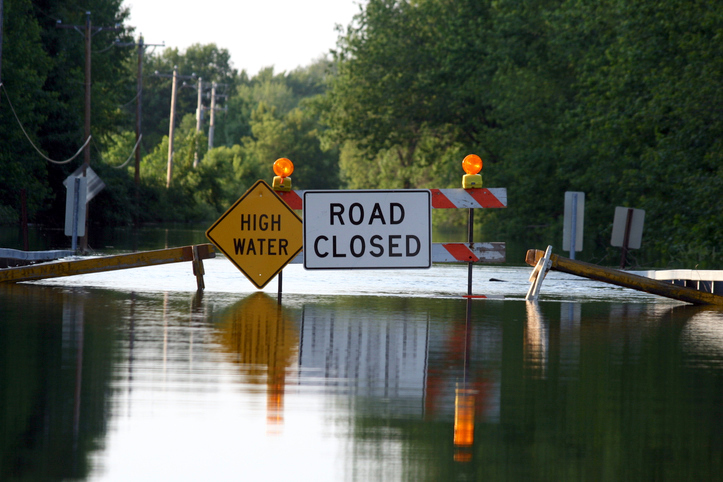Know How to Watch for Flooding in PA

Did you know that flooding is the most common and damaging natural disaster in PA? That damage affects more than just electricity rates. Almost any trickling stream or creek can swiftly turn into a raging flood during severe storms. And PA is not immune to flooding from tropical storms and hurricanes. With a heavy hurricane season predicted for the Atlantic this year, being prepared for severe weather is more important than ever.
Flash Floods in PA
Slow moving thunderstorms, repeated thunderstorms, intense rainfall from hurricanes and tropical storms, or even heavy snow melt can cause flash floods. And it can happen anywhere in PA, including in urban settings too. Concrete simply can’t absorb excess water like soil can. Sometimes flooding can be predicted. But flash floods can happen within minutes without any sign of rain overhead.
The damage from flash floods can be immense. For instance, they can tear out trees, cause mudslides, destroy buildings and bridges, or even break dams. And PA is #2 for flood damage, right behind Florida. Just recently, severe flooding caused massive damage in South-Central PA. In 2020 alone flood damage cost Pennsylvania nearly $2.8 billion.
Before a Flood
Flash floods happen in minutes, leaving little time to react. Thankfully, there are plenty of ways you can stay prepared. The first is to remain weather aware. Sign up for emergency alerts, and keep up to date on weather broadcasts. Secondly, learn about your home’s flood risk. This online Penn State tool can help you plan for a worst case scenario.
Finally, put together an emergency plan. This should include gathering a disaster supply kit for you and your family in mind. Make sure to include an emergency radio, so you can stay weather aware. In addition, learn your evacuation routes and come up with multiple ways to escape.
During a Flood
If you are facing a flood, don’t panic! When a flash flood watch is issued, tune into local weather reports. If you are in a low-lying area, watch for heavy rainfall, strong winds, pooling, and rising water in nearby creeks and streams. Animals might also behave strangely. You might even hear the roaring sounds of water surging before you see it. These are all signs that you should get to higher ground.
Once a flash flood warning has been issued, it’s time to act. If authorities have ordered you to evacuate, turn off water, gas, and electricity to your home and go. Take only the supplies in your emergency kit and move quickly. Expect heavy traffic along evacuation routes. Be aware that it only takes 6 inches of running water to knock someone down. If the road ahead of you is flooded, stop! It only takes 2 feet of water to sweep away a car. Turn around, don’t drown.
If you’re ordered to shelter in place, stay weather aware. If flood waters reach you or your home becomes badly damaged, leave. While sheltering in your attic may sound like a good idea, it’s easy to get trapped there by rising waters. Go to your roof only when you have no other route to safety.PA Storm Preparation
Flash flooding often gives little time to react so it’s important to be ready. The same can be said for electricity prices. High electricity bills during the summer can be a nasty bill surprise. So now is the time to shop for a smart energy plan. Get the scoop on electricity suppliers and find the right plan for you. Visit https://www.paenergyratings.com/

